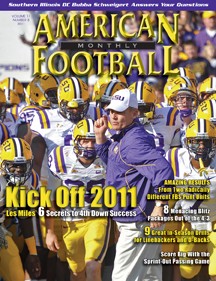Article CategoriesAFM Magazine
|
Speed Report Ė Doing Whatís Best for In-Season Speed Trainingby: Dale BaskettFootball Speed Specialist © More from this issue Playing football is not kind to football speed during the season. While off-season work must focus on mechanical execution and coming into camp running fast, as was covered in our article last month, speed maintenance is the focus for in-season speed training.
Playing football results in contact. Speed relies on efficient muscular contractions. As Iíve pointed out in the past, you donít take a world-class sprinter to a tackling session to peak his speed. Soft tissue being hammered isnít the optimal condition for maximizing high twitch fibers t....The full article can only be seen by subscribers.
|
|
|||||||
| HOME |
MAGAZINE |
SUBSCRIBE | ONLINE COLUMNISTS | COACHING VIDEOS |
Copyright 2025, AmericanFootballMonthly.com
All Rights Reserved





